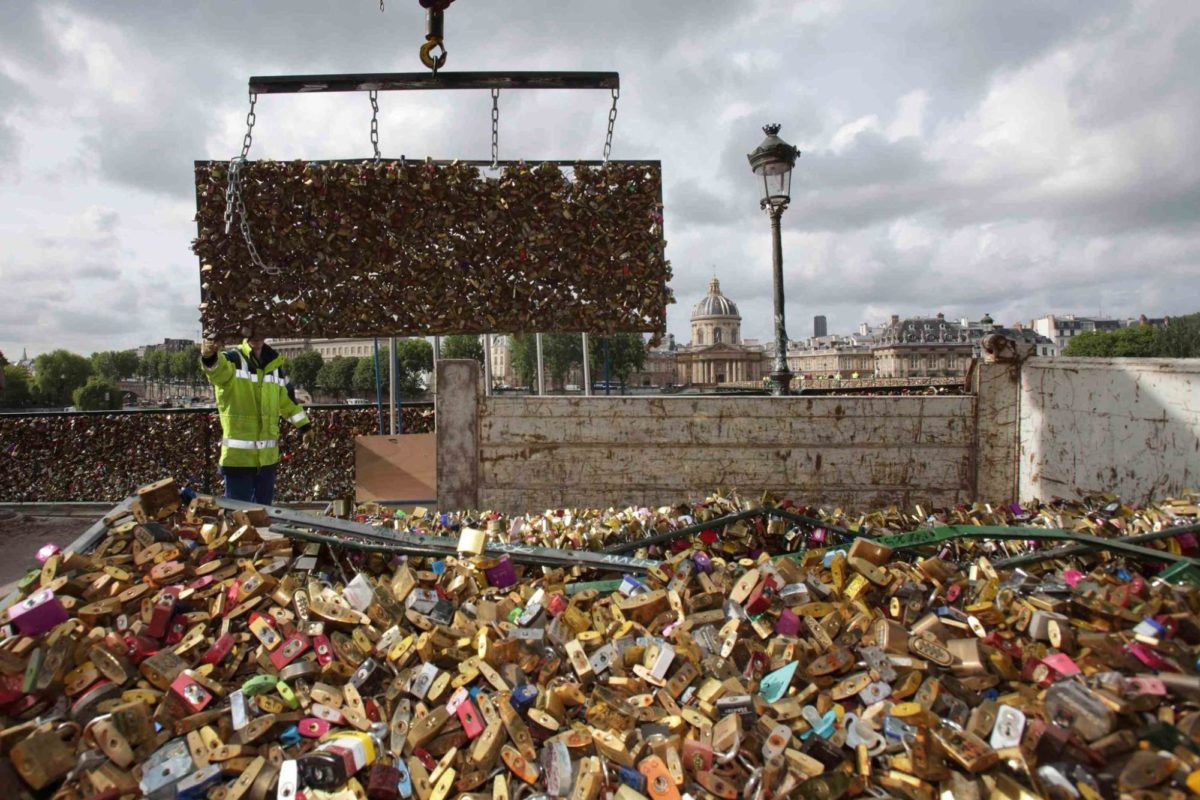It’s a beautiful day outside; the birds sing, and love is in the air. You and your partner are walking when you suddenly stop by a bridge. This bridge has railings covered in padlocks, varying in different shapes, sizes, and colors. Your partner turns to you, holding out a marker, a padlock, and a key. Butterflies fill your stomach as the two of you write your initials, secure the padlock on the bridge, and throw the key into the river as a sign of your undying devotion. As you walk away, you feel your display of love will inspire every soul that comes across it. What could go wrong? Little did you know that participating in this Love Lock trend would cause more harm than good!
It’s speculated that the tradition of Love Locks originated in China, as it was customary for couples to place a lock on a gate/chain and throw away the key to symbolize their love. During WWI, two young lovers in the Serbian town of Vrnjačka Banja brought this practice to popularity. While the woman believed their love would last for an eternity while he was away at war, the man would go on to celebrate his survival with someone else.
This was known as the heartbreak heard around the town, forcing young women to do the only thing they could think to do: literally ‘lock’ in their love to ensure it would be everlasting (thetravel.com). Whether or not this would guarantee a happy ending for these couples is unknown, but it quickly became a tradition that circled the world from then on.
“While I enjoy the idea of having such a strong love for someone that you want to label it for the whole world to see,” Lynx Allen (12) states, “ I would be fearful of locking my initials with someone else because if we broke up, it would be sad knowing somewhere we’re still bound together forever.” Not only is the origin story melancholy, but the fact that you and your ex would still have a public display of love for the whole world to see would be mortifying!
The more love locks added to a single bridge, the more weight that bridge is required to carry. Approximately 16,535 pounds of locks have been added yearly, a weight beyond what a bridge is meant to hold (contiki.com). Such an increase in weight over a short time is bound to make the structure more unstable than it otherwise would have been, placing citizens and bodies of water in danger of said bridge collapsing.
Rust pollution is also a significant concern when it comes to Love Locks. When couples throw their key in the water as an act of devotion, they unknowingly endanger innocent people, animals, and local environments. When a key is left in water, it creates rust that contaminates the water (as well as any animals that may be nearby). On top of that, the keys could end up clogging water pipes and causing tons of money worth of damage to different drains throughout the city.
A majority of people who participate in this trend are often tourists (who don’t look for approval before proceeding). Many locals think the locks diminish the beauty of the landmarks, devaluing the architecture by covering it with copper moss.
Several Love Lock bridges have been taken down in the past few years, sparking controversy between both sides of the argument. The debate is based more on the principle rather than the actual locks themselves. Whether you adore love locks or think there’s a better way of expressing your love, the takeaway is to be mindful of the impact your small action could have.



























